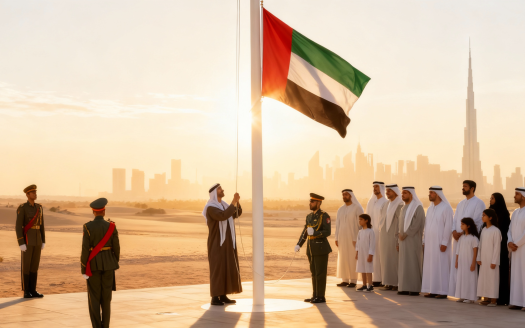
Can Dubai’s Real Estate Keep Up With Itself?
When the Crane Stops Being a Symbol of Growth
The skyline of Dubai has for years been a relentless indicator of momentum: tower after tower rising, palms planted in the sea, and real-estate stats climbing without pause. But now the question is shifting from “How high will it go?” to “When will it stop?”
In 2024, the emirate recorded city-wide residential price growth of approximately 18% year-on-year, while rents climbed around 16%. That kind of acceleration inevitably prompts scrutiny of the supply side—and that is where the strain and inflection lie.
Demand: Still firm
Despite headwinds—from inflation to rising global rates—the demand engine shows no obvious signs of stalling. In the first quarter of 2025, residential transaction volumes in Dubai surged by around 23% compared to a year earlier, with off-plan deals up approximately 33% and ready properties up about 5%. For the second quarter of 2025, roughly 49,600 property transactions were recorded, valued at AED 147.6 billion, representing an 82% increase in volume compared to the same period two years prior.
These figures underscore that buyers—both speculative and end-user—remain active. Analysts say Dubai continues to act as a safe harbour for capital and residency, a rare combination in a time of global instability. But high demand alone does not guarantee smooth sailing.
The composition of that demand is changing, too. Off-plan properties dominate the market, accounting for nearly 60% of total transactions in early 2025. These sales are largely driven by developer incentives, such as extended post-handover payment plans, and by the enduring appeal of the 10-year Golden Visa linked to property ownership above AED 2 million. While this keeps the pipeline busy, it also raises questions about what happens when speculative intent slows and actual occupancy lags behind sales.
Supply: The looming wave
Here’s where the recalibration begins. While demand remains robust, supply is building and will force a market rewiring. Forecasts indicate that nearly 300,000 residential units are expected to enter the market by 2028. For 2025 alone, around 73,000 units are expected to be delivered. Yet, the 2024 hand-over figures reveal a shortfall: only about 30,200 residential units were completed, which was down 11% on forecast and 30% lower than the 2023 pace.
The mismatch between what is projected and what is delivered creates a tension. Until the wave hits, prices can keep climbing; once it arrives, there may be readjustment. Developers remain confident that absorption will continue, pointing to population growth and migration patterns. But with population growth slowing to an estimated 2.4% per year and rental affordability stretching thin in mid-market communities, the risk of oversupply is real.
The inflection
What matters now is timing—and the market’s ability to absorb new inventory without cracking. Fitch Ratings has warned that Dubai could face a double-digit price fall of no more than 15% in the second half of 2025 into 2026, citing a planned delivery of 210,000 units over the next two years.
That is not a crash but a calibration—an outcome of supply catching up with desire. In that moment, the narrative shifts: from scarcity driving premiums to abundance creating choice and pressure. Developers face higher construction costs, mortgage rates remain elevated, and buyers have more options than urgency. The market is entering a new phase of realism after three years of runaway growth.
The rental mirror
One of the clearest indicators of shifting momentum will come from the rental market. For now, yields remain strong—averaging around 6.3% across the city—but those figures mask deep contrasts. Prime waterfront areas continue to see upward pressure, while peripheral zones such as Jumeirah Village Circle, Dubailand, and parts of Dubai South are already recording modest rental softening. As new stock enters, competition will intensify, forcing landlords to recalibrate expectations.
At the same time, the cost of living is reshaping tenant behaviour. Renters are moving to outer communities, opting for shared spaces, or negotiating longer-term leases to lock in rates. Developers who once focused exclusively on luxury are beginning to pivot toward mid-market and co-living formats, responding to affordability gaps and demographic change.
Financing and regulation
Dubai’s regulatory framework has evolved to stabilize the sector. The Dubai Land Department has increased data transparency, publishing real-time transaction records and building a register for real estate investment funds. Mortgage rules remain conservative: buyers typically need a 20% down payment for properties under AED 5 million, limiting speculative borrowing. But higher interest rates globally are already weighing on investor appetite.
Developers are also feeling the squeeze. Construction costs rose nearly 7% in 2024, driven by logistics and materials inflation. Many developers have tied their payment structures to construction milestones, incentivizing timely delivery but leaving little room for margin error if sales slow. In this environment, credibility and execution matter more than branding or brochure gloss.
Why it matters now
For investors, end-users, developers, and policy-makers alike, there is a narrowing window of opportunity. Buying under the assumption of perpetual 20% annual price growth may no longer hold. Selling without factoring in near-term delivery risk may leave capital exposed. Developers must execute not just launch but completion, attract real demand—otherwise they face absorption risk.
Governments and regulators must monitor the transition from explosion to expansion: from rapid boom to managed growth. A well-timed shift avoids overheating, but a mistimed one risks dislocation. The same infrastructure and visa reforms that propelled Dubai’s ascent must now guide its stabilization.
Close
Dubai stands at a threshold. The era of unrestrained upward trajectories may be giving way to the era of calibrated expansion. The cranes will not disappear; they will simply rise more thoughtfully, their pace set by data rather than exuberance. Growth in Dubai’s property market is no longer about how much steel can be lifted but how much the city can sustain. In that balance lies both risk and opportunity.
Sources:
- https://www.khaleejtimes.com/business/property/dubai-new-homes-2025-highest-in-5-years
- https://www.khaleejtimes.com/business/property/dubais-property-market-enters-a-phase-of-selective-growth
- https://www.arabianbusiness.com/industries/real-estate/dubai-real-estate-market-hit-41-3bn-in-h1-2025-as-prime-sales-surge-113-per-cent
- https://www.arabianbusiness.com/industries/real-estate/dubai-real-estate-price-forecast-amid-increased-supply-fitch-ratings
- https://gulfnews.com/business/property/dubai-real-estate-market-hits-dh52587b-in-record-2025-sales-1.500312780
- https://gulfnews.com/business/property/dubai-tenants-can-expect-rents-to-stabilise-with-more-homes-on-the-way-1.500300206











